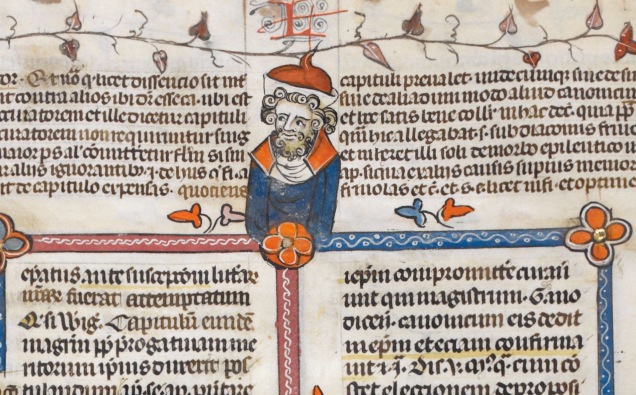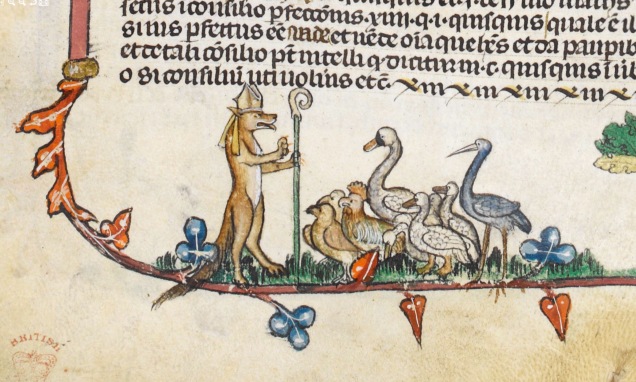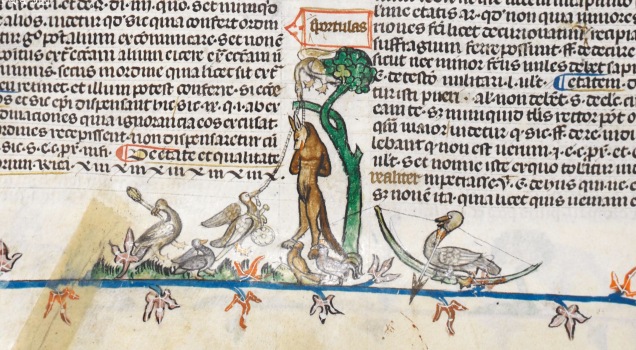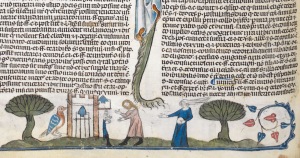Twitter, etc. have been buzzing for the last few days with the figure from an illuminated manuscript, who looks like Yoda from Star Wars, to wit:

In the interests of ploddingly dull accuracy, I feel obliged to point out that this figure is probably supposed to represent the devil dressed as a university lecturer (don’t say that it’s never occurred to you that your lecturers might be shape-shifting demons).

Specifically, he probably represents a doctor of canon law, since the manuscript in which he appears is a copy of the Decretals of Gregory IX with a commentary by Bernard of Parma (and not a commentary on the story of Samson as alleged by one source*).
The Decretals were also known as the “extra book” (liber extra) because they were compiled in the 13th century as an addition to the so-called Decree of Gratian, the main collection of canon law composed a century earlier.

While this probably sounds recondite and tedious (or both), one of the interesting features of the Decretals is that they codified the 12th century papal legislation against heresy, which led to the establishment of the first inquisitions in the south of France. This legislation also compared heresy to treason, implying that in certain cases it could be punished by execution.
However, even if this volume contains the legislative basis for the persecution of heretics by the medieval church, the illuminations are often quite critical of those charged with upholding this legislation – not only the demonic doctor of canon law, but also the kind of bishop whose sole aim in life is to prey on his flock.

Fortunately, the corrupt and exploitative clerics eventually get what is coming to them.

See, this is almost as much fun as Master Yoda.
(If you want to view more of this manuscript yourself, it’s on the British Library website here: http://www.bl.uk/manuscripts/FullDisplay.aspx?ref=Royal_MS_10_E_IV)
* Note: the NPR story which alleges that this manuscript is a commentary on the story of Samson is probably referring to the illustrations of the story of Samson which run along the bottom of the page in this section of the manuscript. For example, the bottom of the “Yoda” page (f. 30v) shows Samson bringing honey home to his father and mother – Judges 14:9. These have nothing to do with the text above.

Reblogged this on Zwinglius Redivivus and commented:
Brilliant!
LikeLike
Stop me before I teach again! 😀
LikeLike
While you’re at it, any thoughts on the symbolism of the some of the other illustrations? In particular, the series of the rabbits capturing, trying and executing a hunter and his hound. And my personal favourite – the knight battling a snail.
LikeLike